FujiFilm XF1 Overview
The FujiFilm XF1 is a high quality compact camera with a simple retro design and features that you’d typically expect to find only on a DSLR. It features a 12 megapixel EXR CMOS sensor, 4x optical zoom, and a high quality F1.8 Fujinon lens. The focal length of the lens is equivalent to 25-100mm which is a great range for everyday walking around. The effective aperture of the XF1 is F1.8 at 25mm and F4.9 at the 100mm end. For the more advanced casual photographer the camera has aperture priority, shutter priority and manual shooting modes as well as the capability to shoot in RAW.
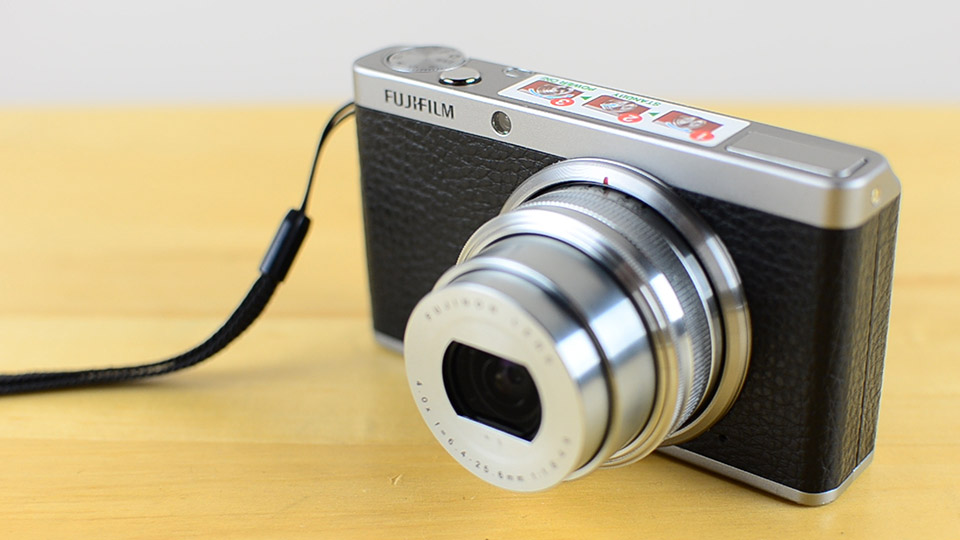
One of the most noticeable design differences with this camera is the way you turn it on and off. Instead of a pressing a power button, you turn and twist the lens outwards to turn the camera on. You twist and push the lens back in to turn the camera off.

The FujiFilm XF1 features a 3 inch LCD monitor on the back to review your shots and manage the camera settings. The menu is organised into logical sections and most options are pretty self explanatory.
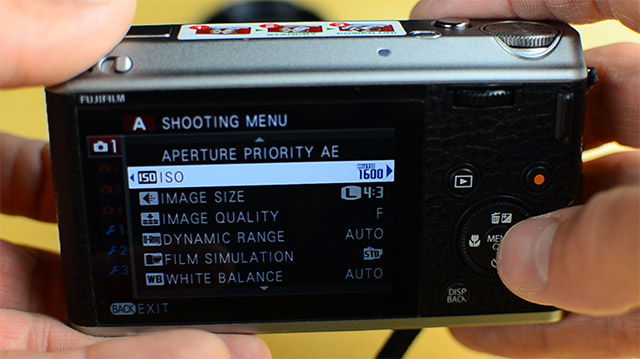
On the side of the FujiFilm XF1 you will find a USB 2 port as well as an HDMI mini connector to output your photos or videos directly onto your TV. At the bottom of the body is a slot for your SD or SDHC memory card.
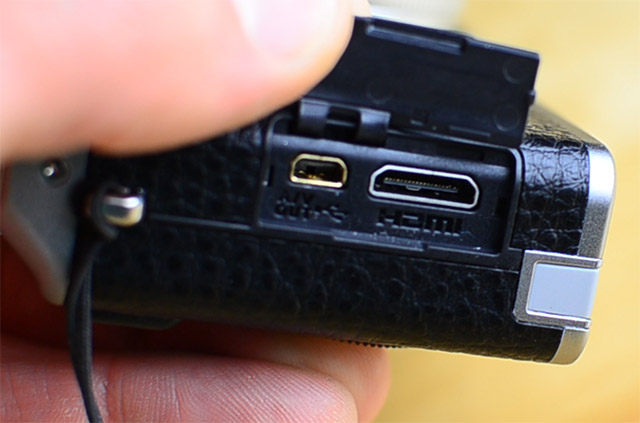
The FujiFilm XF1 is a fairly chunky compact camera, weighing in at 225g. However, it packs a ton of features that offer something to the beginning as well as the more intermediate photographer.
On top of the the main shooting modes, you have a large number of additional in-camera shooting options. These include the EXR modes to help with night time photography or expanding the dynamic range of an image. You will also find facial recognition, different types of film simulation as well as a number of more creative settings like multiple exposure, HDR, panorama or even tilt-shift effects.
The highest ISO supported by the FujiFilm XF1 is 12800 and with a F1.8 lens and the additional EXR noise reduction modes you can capture photos at night without too much trouble.
The FujiFilm XF1 supports video recording at up to full 1080p HD. The highest supported frame rate for the camera is a whopping 200 FPS, but unfortunately only at a low resolution of 320 x 112 which didn’t seem particularly useful.
The capability of shooting in RAW format is a welcome addition for photographers who want to take the developing of their digital negatives into their own hands. Hop over to the official FujiFilm website for the full specification of the FujiFilm XF1.
I decided to grab the FujiFilm XF1, an empty SD card and headed out into the city of Melbourne to find out how the camera would perform in the field.
FujiFilm XF1 Sample Images
I have to admit I was pretty impressed with the quality of the images captured by the XF1. The images came out crisp and sharp with a good amount of contrast and pleasant colours.
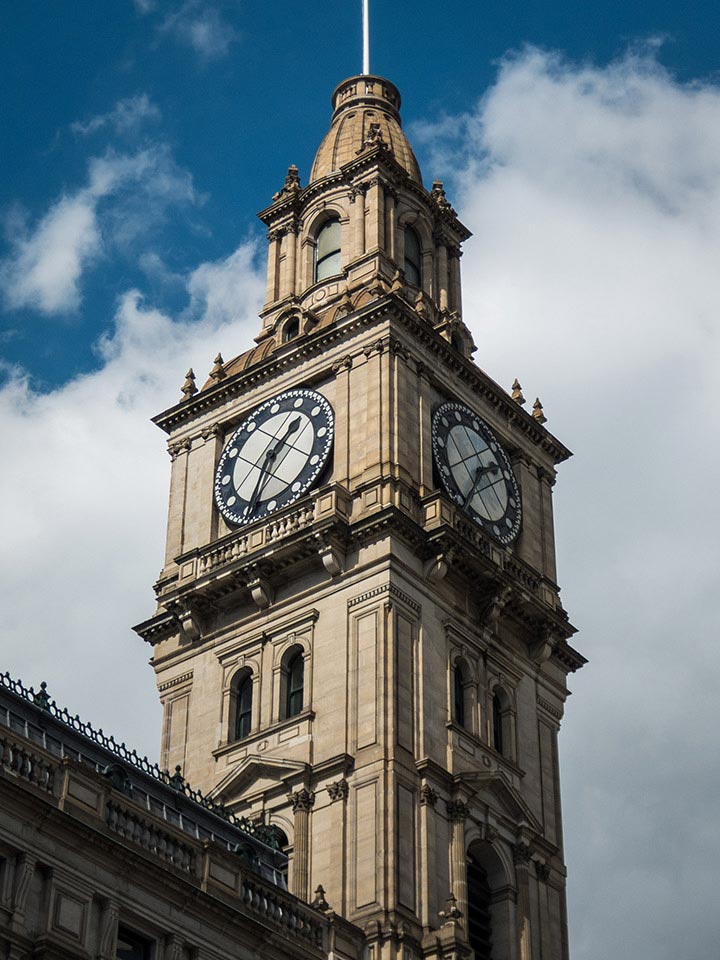
The Fujinon F1.8 lens with its 25-100mm focal length gave me enough room to capture almost any situation that I came across. Here’s a bumblebee-coloured tram on the streets of Melbourne

One thing I did notice was that the FujiFilm XF1 had a bit of a tendency to blow out the highlights of most the daytime photos that I took. I had to bring down the exposure compensation to ensure the harsh Australian sun reflecting off the side of the buildings did not wash out my image. This was pretty easy to adjust in my shooting options by bringing down the exposure compensation.
On the left is the image shot with Aperture Priority mode without exposure compensation. On the right side is the same scene with the exposure compensation adjusted to retain the highlights.
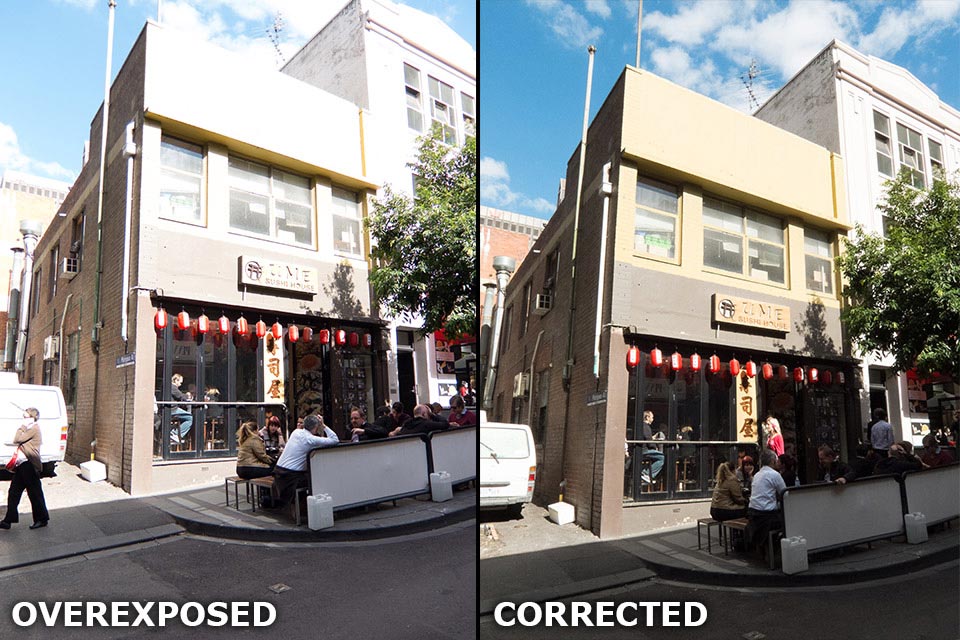
With an F1.8 aperture you can also use the FujiFilm XF1 to take macro shots. Minimum working distance (distance from camera to subject) is about 3cm. Being so close to my subject and opening the aperture all the way up gave me a nice shallow depth of field. The Bokeh (the look of the out of focus areas) was soft and smooth in the resulting macro shot of this flower.
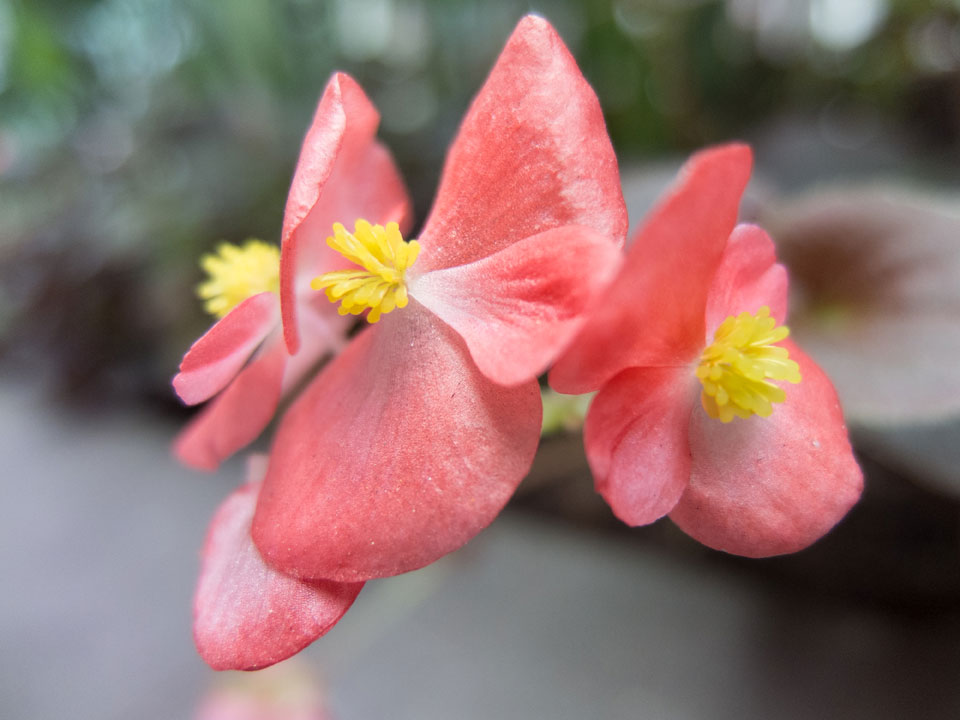
As the day faded away, I kept taking photos to see how the camera would cope with lower light situations. Even during dusk, the camera still managed to capture great images, handheld without stabilisation due to the F1.8 aperture of the Fujinon lens.
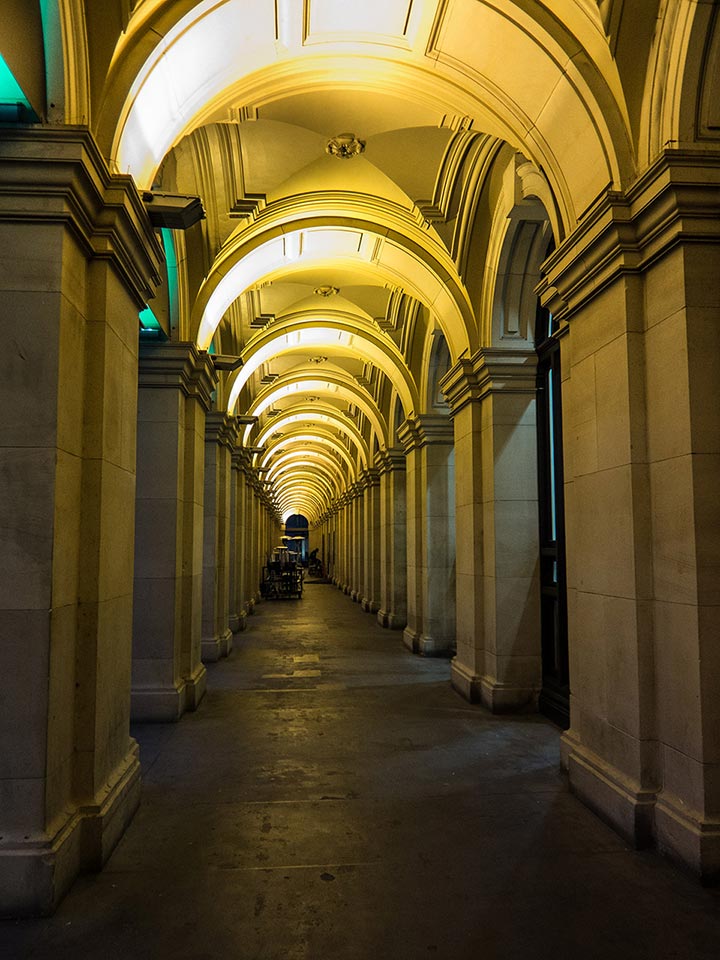
Let’s look at some of the more artistic shooting options offered by the XF1!
Special Photography Modes Of The FujiFilm XF-1
The FujiFilm XF1 comes with a large set of in-camera shooting modes that you can use for creative effect. I had a lot of fun playing around with these to create all sorts of interesting looks. Here is a photo taken with the Dynamic Tone mode which amplifies contrast and gives everything a harsh and gritty look.
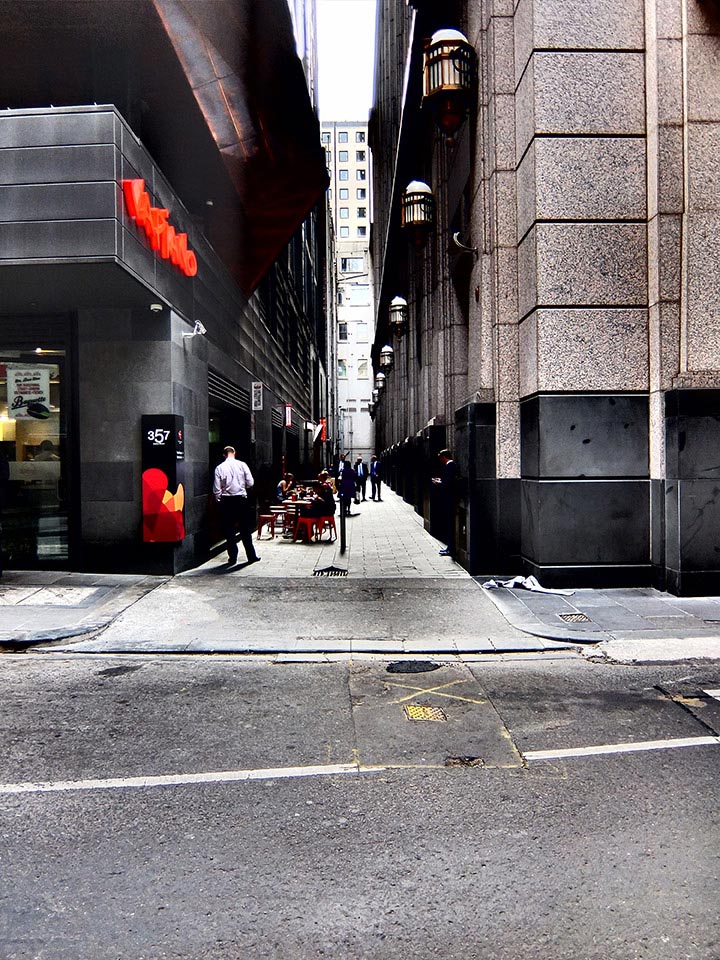
For capturing panoramic images, the FujiFilm XF1 can shoot horizontal or vertical panoramas up to 360 degrees. Simply enable panorama mode and follow the camera’s instructions to sweep from left to right or from top to bottom through the scene. The XF1 will capture a number of images and then stitch them together automatically in the camera. I was actually impressed by how well this worked. The only artefact that you can see is the doubling up of the people moving through the shot; the rest of the street view is seamlessly stitched together.

Tilt Shift Photography
True tilt shift photography uses a lens that is tilted or shifted off the centre of the sensor in your camera, shifting the plane of focus. The most common effect achieved with this technique is the effect of minification. It looks like the world is a toy world and you are looking down onto it. The reason the world seems minified is because the shifted plane of focus and the shallow depth of field gives the impression that it is a macro shot.
The FujiFilm XF1 includes a Miniature mode that uses post processing to simulate this tilt-shift effect. Out of all the creative modes on the XF1, I used this one the most. It was easy to create cool looking images no matter where I went. Here is one of a yellow bus parked in front of an office complex.
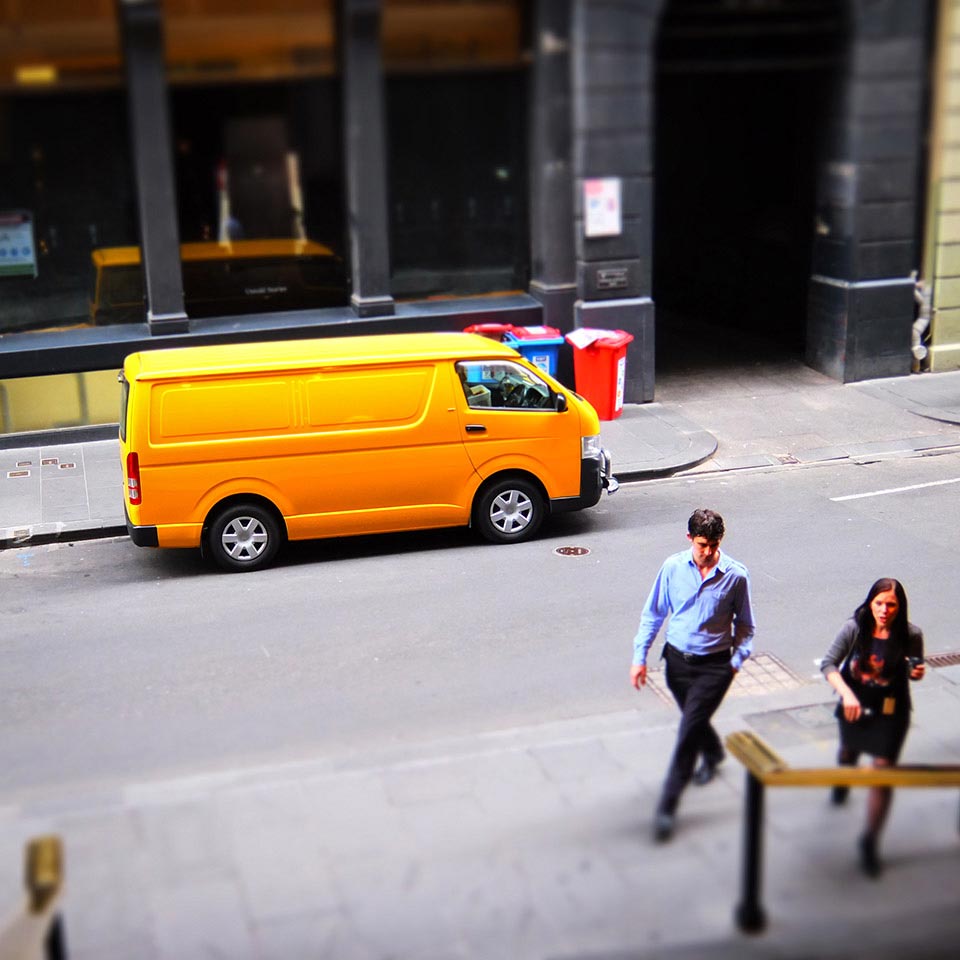
Tilt shift photography works especially well if you can get higher up as it increases the feeling of looking down onto a toy world. I took this one out of one of the skyscrapers in Melbourne CBD.
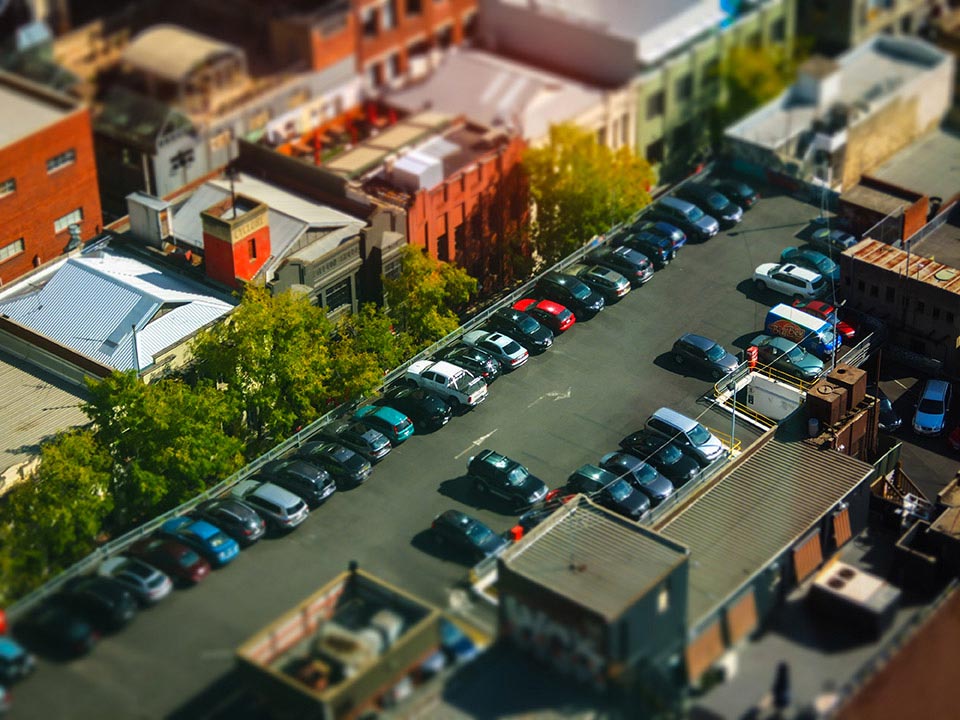
Even if you’re just walking around you can use the Miniature mode to capture some interesting and unusual photos. The shifted focal area leads the viewers eye directly into the centre of the image.
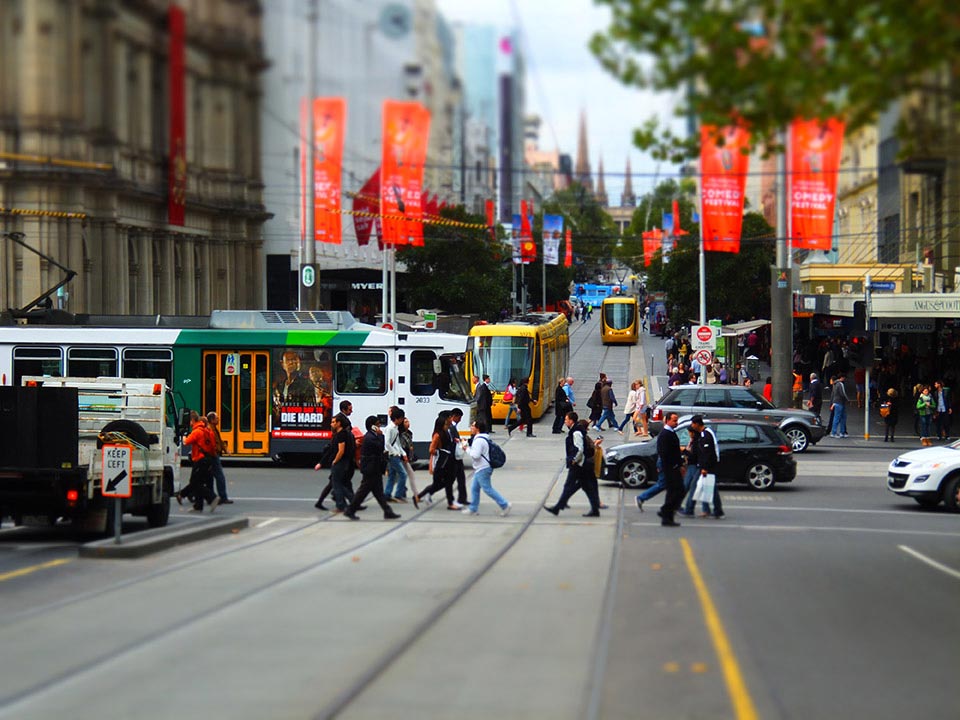
Next, let’s look at the RAW capabilities of the FujiFilm XF1.
Shooting In Raw
I am an avid DSLR photographer and a couple of years I have switched to shooting all my images in RAW and I have never looked back. Using a RAW format retains much more of the information captured by the sensor during the exposure and places the power to develop these ‘negatives’ yourself. Usually the camera does this process automatically and spits out a JPEG image. Shooting in RAW gives you much more control over the look and feel of your final image and I think it’s an invaluable tool to photographers.
The XF1 offers shooting in FujiFilm’s proprietary .RAF format. You can also shoot in RAW + JPEG so you get the best of both worlds. Here are a few examples of the JPEGs created directly by the camera as well as the RAW images after I processed them in Adobe Lightroom.
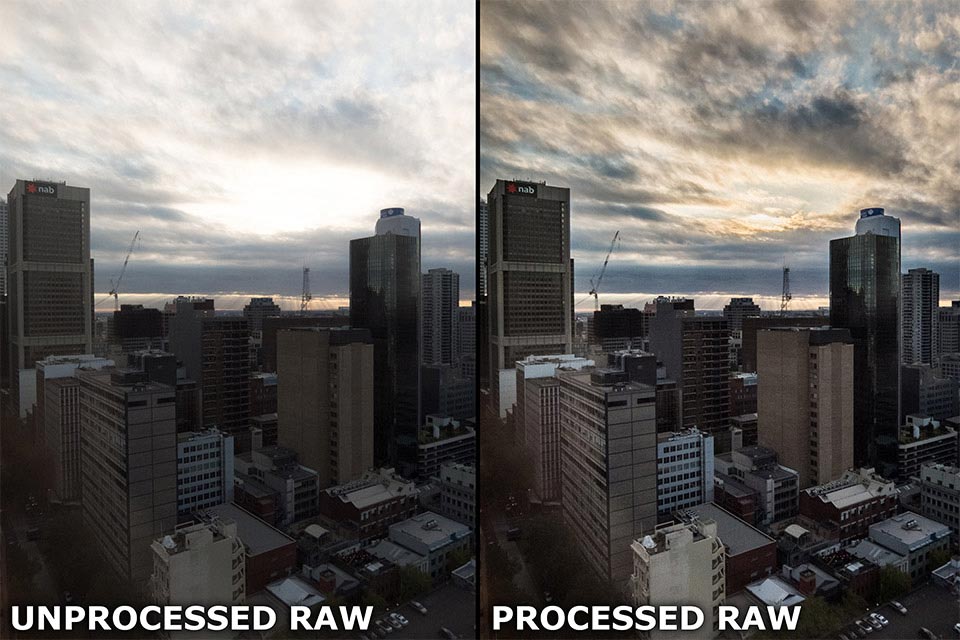
Before I could work with the RAW images from the FujiFilm XF1 in Adobe Lightroom, I had to upgrade to version 4.2 since it was the earliest version to support the FujiFilm .RAF format. But once I was set up, I ended up shooting almost all images with the XF1 in RAW.
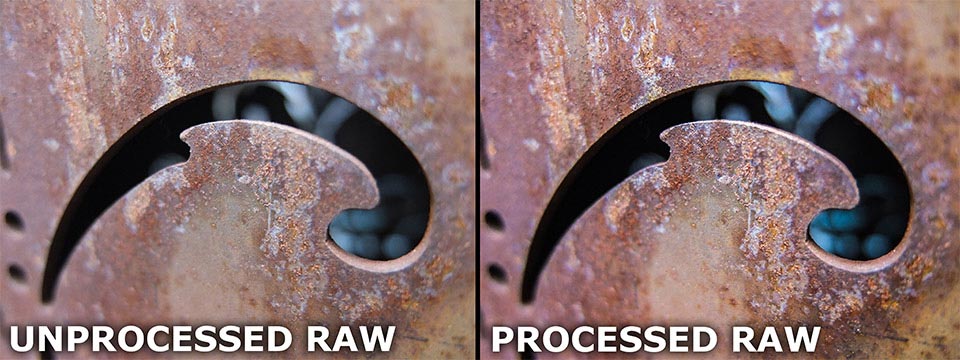
Night Time Photography and the Low Noise EXR Mode
Photography is all about light. Therefore cameras struggle big time when it comes to shooting in situations where there is very little of it. This applies especially to night time photography. To compensate for the lack of light hitting the image sensor, the camera will open up the aperture as wide as it can and increase the ISO to amp up the sensitivity of the sensor.
While the aperture of the FujiFilm XF1 can open up to F1.8 it’s usually not enough during night and so the ISO rises to quite extreme levels depending on the shot you are taking. This causes a lot of noise in your image as can be seen in the picture below.
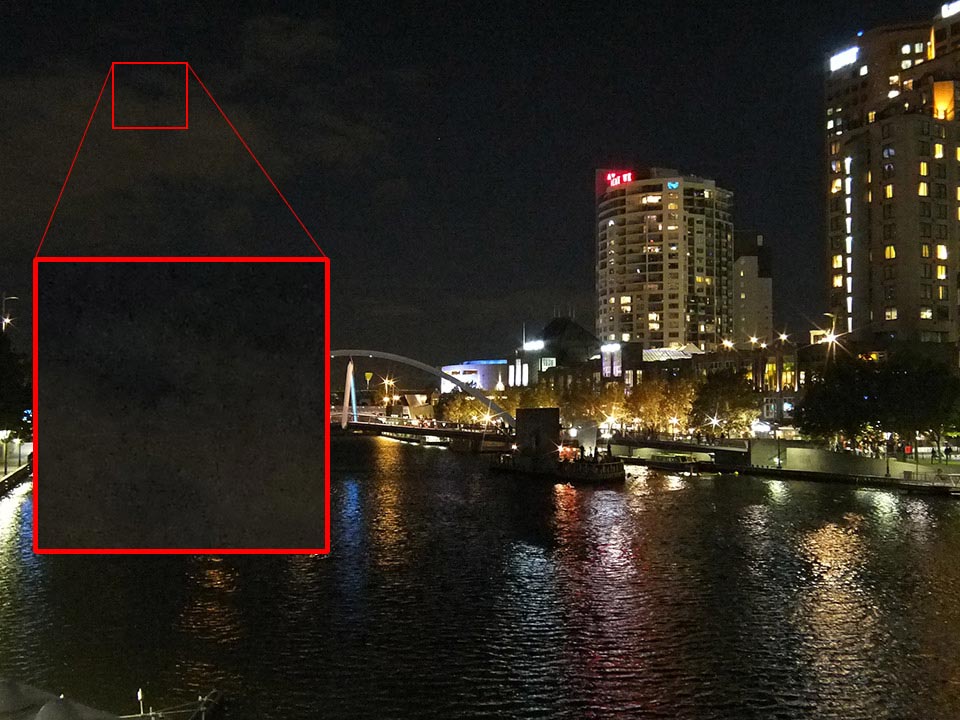
To deal with exactly this situation, the FujiFilm XF1 provides an EXR High ISO Low Noise mode. With this mode, the camera takes a a quick sequence of images and combines them to reduce the noise in the final photo. I was actually impressed with how well that worked. Below is the same scene, shot with the EXR High ISO Low Noise mode of the XF1.
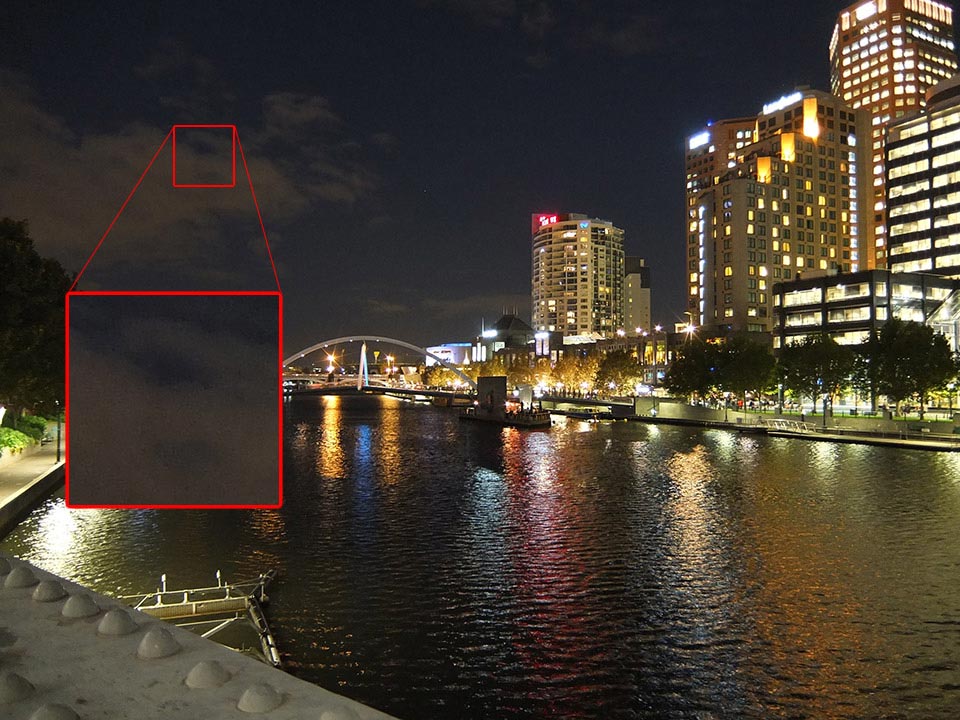
Let’s look at the video capabilities of the FujiFilm XF1.
Taking Videos
I have taken a number of sample clips with the FujiFilm XF1 and you can check them out in the video at the beginning of this post. The quality was pretty good shooting at 1080p, although I felt the audio recording was nothing to write home about.
Since the resolution gets smaller as the frame rate goes up, I wouldn’t consider anything past 60FPS at 720p as usable – unless you intend to only show the video to your mates exclusively on your phone. At 200 FPS the resolution is so small that I couldn’t think of any other use than maybe creating some animated gifs with the video.
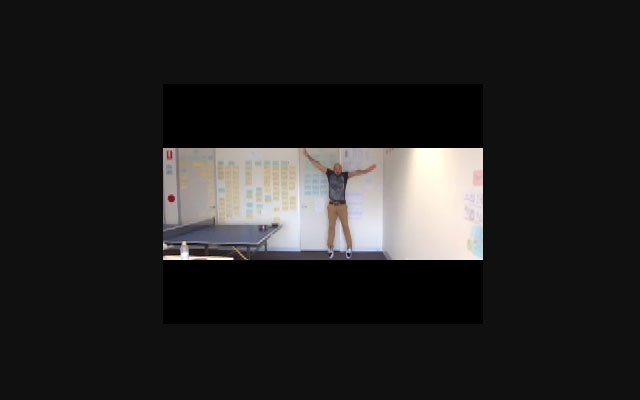
One thing i didn’t like about the video capabilities of the camera was that you no longer had control over the aperture or the shutter speed. None at all. Once you start taking video the camera takes over and you lose all the manual controls that you have available when taking photos. This was especially noticeable with the autofocus that continuously flicked in to ‘focus’ the image, causing a fair amount of jittering in my footage, especially when filming moving objects. For many people that might not be a big deal, but it just made me feel like the video capabilities were rather hastily tagged on to FujiFilm XF1.
As a camera to take casual video or capture your adventures however, this camera will be more than sufficient. It’s unlikely you’d use anything except 1080p, 720p at 30 or 60 FPS anyways or that you’d feel particularly bothered by the autopilot taking over when you film your clips.
Verdict
The FujiFilm XF1 is a very versatile compact camera that should satisfy most people looking for taking great quality shots in most situations. The Fujinon lens is incredibly sharp and with a F1.8 aperture can create a nice shallow depth of field with pleasant Bokeh as well as operate well as the light of the day begins to fade. While not spectacular, even shooting at night gives satisfactory results thanks to some of the more specific shooting modes available with this camera.
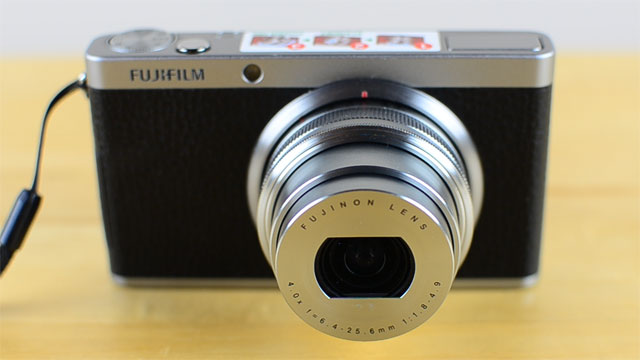
For the more advanced user, the camera does offer aperture priority, shutter priority and manual shooting modes as well as the capability to capture the images in a RAW format for further processing in programs like Aperture or Adobe Lightroom.
The camera comes with a ton of options and shooting modes for artistic expression and I have to admit I enjoyed the Miniature (Tilt-Shift) mode the most, running around Melbourne and looking at the world like a giant looming over a toy world.
My biggest gripe I had with the camera was the way of turning it on or off. Twisting and pulling the lens itself to switch the camera on and off felt awkward and tedious, even after I’ve used the camera for a while. One thing that happened a couple of times was that while trying to zoom out, I would rotate the lens a little bit too far and accidentally power down the XF1. I would at least have preferred a simple ‘on/off’ button to be available as an alternative.
If you’re primarily looking for a camera to primarily take video, this is probably not it. But the photos coming out of the FujiFilm XF1 look excellent and the F1.8 aperture and 25-100mm focal length of the lens will have you covered for most shooting situations. If you’re looking for a compact camera with a few more advanced features to take your photography to the next level, the FujiFilm XF1 might just fit the bill.




3 Responses
Just wanted to say a great review from somebody that can take a good photo, I’m just waiting delivery of my XF1 and this review has helped outline some very good pointers.
Many thanks
Thank you very much! Great to hear you found the review helpful!
Its late… but that was excellent. This camera is amazing having had the xq1 & 2 . Xf10 and more. I was shocked how good the EXR cmos is against the X-trans. I’ve had the nikon p3300 & 3400 the canon s110. The canon was the worst. Nikon was good but the Fuji is in another league. XF1 in 2021 over my apsc compacts. That’s saying something